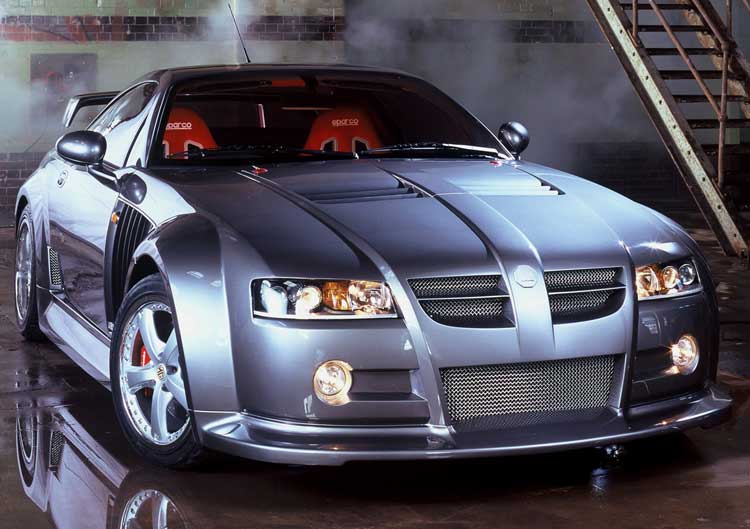MG SV
Of all Britain's great automotive follies, this was perhaps the most bonkers

Your support helps us to tell the story
From reproductive rights to climate change to Big Tech, The Independent is on the ground when the story is developing. Whether it's investigating the financials of Elon Musk's pro-Trump PAC or producing our latest documentary, 'The A Word', which shines a light on the American women fighting for reproductive rights, we know how important it is to parse out the facts from the messaging.
At such a critical moment in US history, we need reporters on the ground. Your donation allows us to keep sending journalists to speak to both sides of the story.
The Independent is trusted by Americans across the entire political spectrum. And unlike many other quality news outlets, we choose not to lock Americans out of our reporting and analysis with paywalls. We believe quality journalism should be available to everyone, paid for by those who can afford it.
Your support makes all the difference.If I had the time and the money, I would go out, find an MG SV, buy it, cover it in concrete, leave it at the entrance to what's left of the old MG Rover Group works at Birmingham, and have it stand there for all time as a memorial to the passing of the indigenous British motor industry. It would cost me £50,000 or so for the car, plus whatever St Modwen Properties would want for the freehold of a few square feet of land on the Longbridge site. But it's money I haven't got, sadly.
Actually, come to think of it, the MG SV was built with money that its parent, MG Rover, didn't really have either. According to the best enthusiasts' website (www. austin-rover.co.uk), which is the most authoritative source on such matters, the MG SV was "more raw than a Ferrari, more aggressive than a TVR, and certainly more exclusive than a Porsche".
Maybe. It was also a huge irrelevance and, if anything, it demonstrated the upward limitations of the MG brand rather than the reverse. It was a distraction from the main task that MG Rover's then owners, the "Phoenix Four", should have been obsessing themselves with - the development of a new family hatchback. Had they managed to get such a car closer to production, the eventual deal with the Chinese might have been a bit happier for the British side. The MG SV probably lost the company money. Few were sold, even for a niche product. Ever seen one?
To be fair, when it was launched at the Birmingham Motor Show in 2002, it caused a bit of a stir. It was, indeed, a new MG, even though the engine was from the Ford Mustang and the underpinnings had an even more odd parentage. It looked stunning, and plenty applauded its audacity.
Yet, in truth, MG Rover shouldn't have bothered. Frolicking with this piece of exotica was no way to spend the precious dowry BMW had left behind when the Bavarians baled out in 2000. Even if it had been a huge hit, a niche product such as the SV was never going to spin huge amounts of money. And it was a very eccentric vehicle indeed.
Originally, this MG was something called a Qvale Mangusta, a supercar handbuilt by De Tomaso in Italy to a remit set by Kjell Qvale, an industry legend who made heaps of money importing cars into the US (including VW Beetles and, funnily enough, MGs). When that venture failed, MG Rover took it over and restyled it.
The carbon-fibre bodies were made in Turin, the chassis originated from a factory south of Modena, and the V8 engines were supplied by Ford in North America. The finished cars were then shipped back to Longbridge for final painting and trimming. Not the most streamlined of production processes, even for a "specialist" product.
The SV was, then, another engineering-led mad idea from the British motor industry, launched when it least needed it.
OK, there were more significant British car flops than the MG SV. Every petrolhead has his favourite light that failed; the Austin 1800, Allegro and Princess, the Rover 45, the CityRover, and so on. The MG SV, however, stands out. It was what they call in sporting circles an "unforced error". It would look great as a sculpture, though - a fine 21st-century folly.
Join our commenting forum
Join thought-provoking conversations, follow other Independent readers and see their replies
Comments